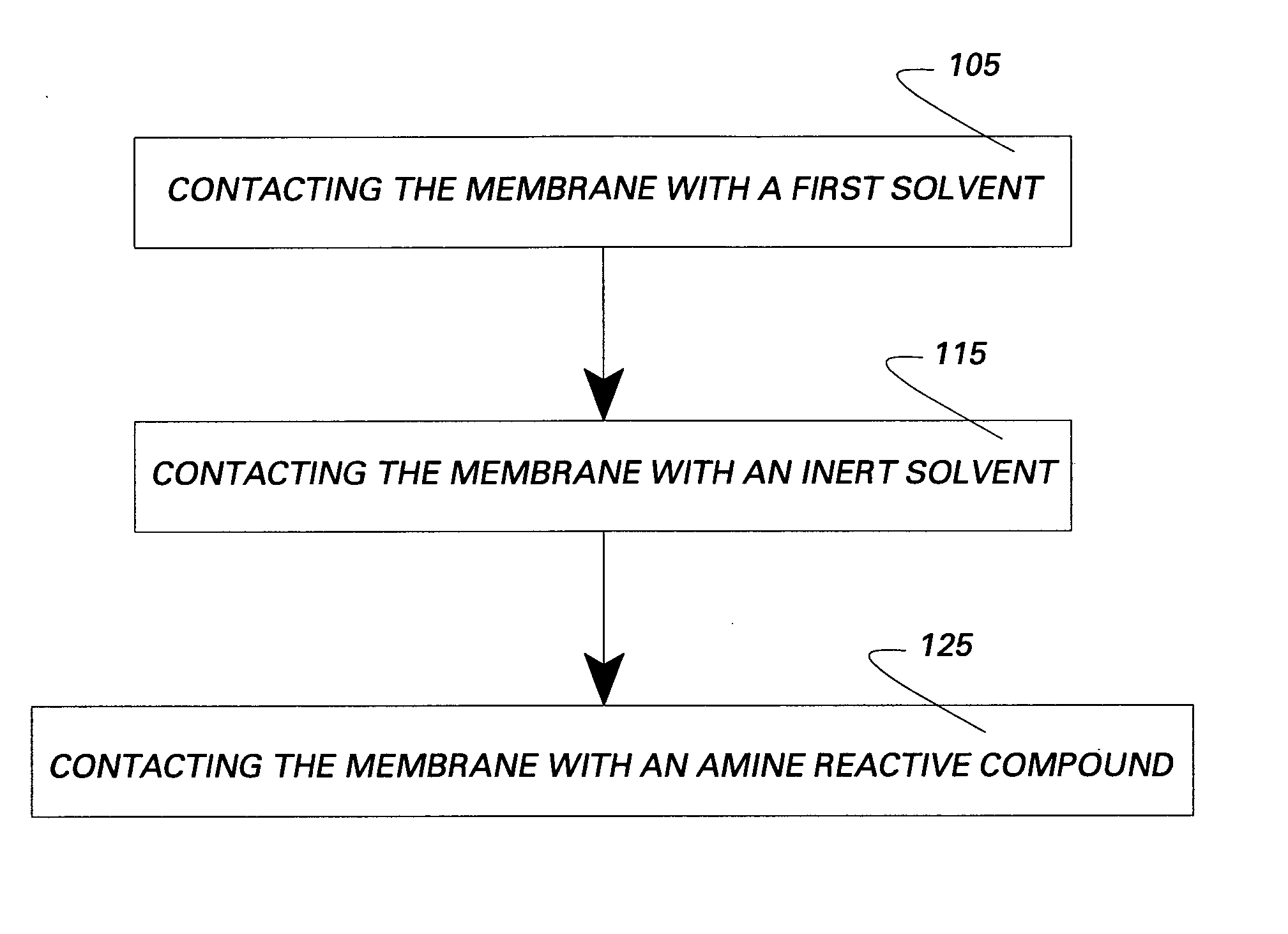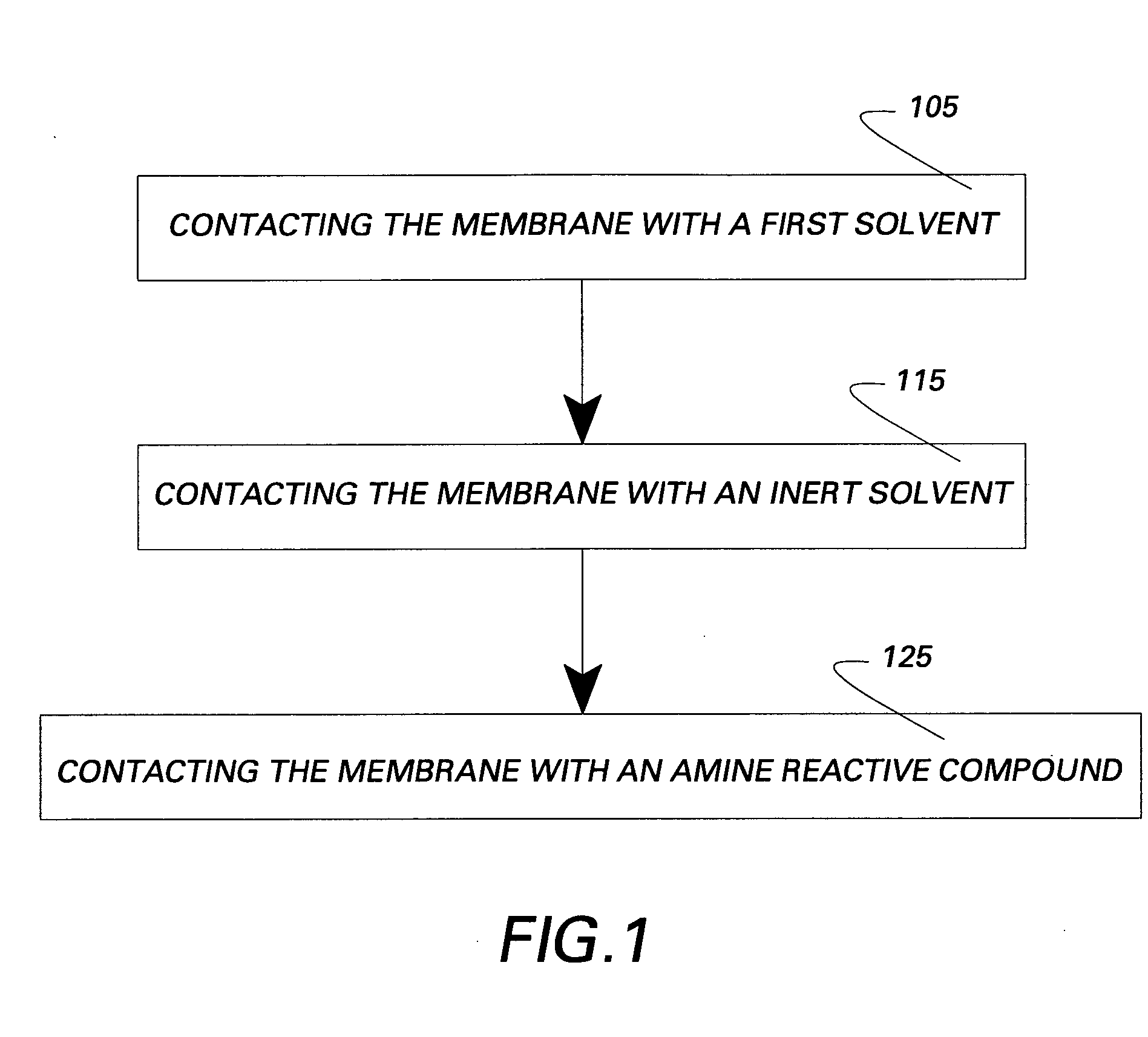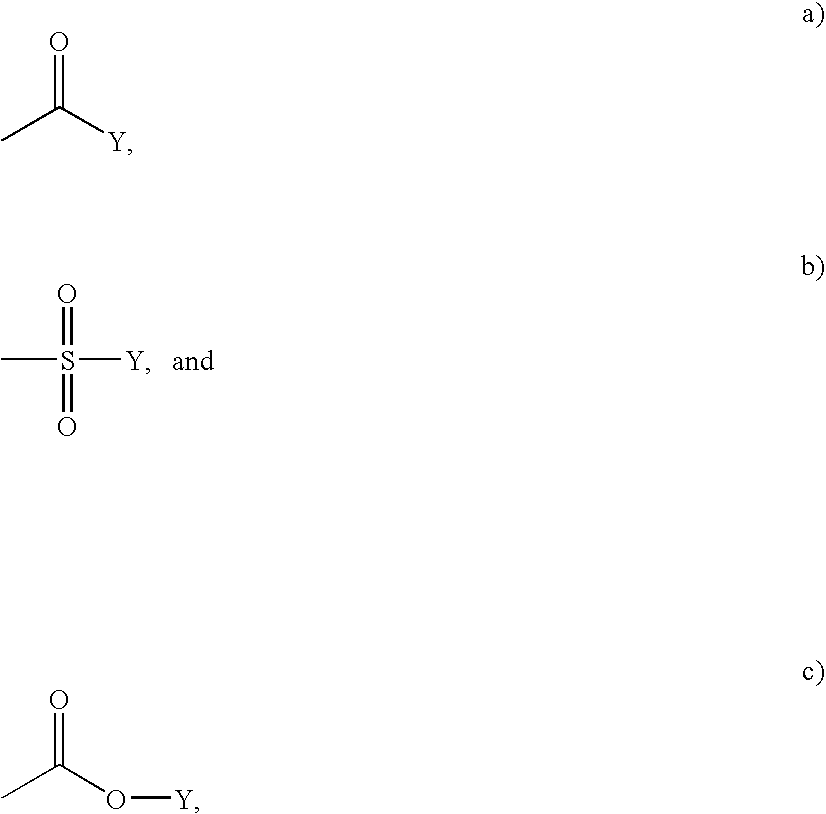Membranes and methods of treating membranes
a technology of membranes and amine reactive compounds, applied in the field of membranes and methods of treating membranes, can solve the problems of limiting the reaction of amine reactive compounds with the membrane, aqueous and/or alcoholic solvents may not be useful for reacting membranes with alcohol or water reactive post treatment reagents, such as amine reactive compounds, and limiting the reaction of amine reactive compounds
- Summary
- Abstract
- Description
- Claims
- Application Information
AI Technical Summary
Benefits of technology
Problems solved by technology
Method used
Image
Examples
example 1
[0061] A 5.08 cm diameter disk punched out membrane was kept in 150 ml of 1000 ppm NaOCl solution in deionized water (pH=8.2) in darkness. After 35hours of exposure to NaOCl, the membrane was thoroughly rinsed with DW, and flux-rejection behavior of the membrane was tested (Table 1).
example 2
[0062] A 5.08 cm diameter disk punched out membrane (GE Osmonics) was kept in 150 ml of 1000 ppm NaOCl solution in deionized water buffered to pH=8.0 in darkness. After 35 hours of exposure to NaOCl, the membrane was thoroughly rinsed with DW, and flux-rejection behavior of the membrane was tested (Table 1).
example 3
[0063] A 5.08 cm diameter disk punched out membrane (GE Osmonics) was kept in 150 ml of 1000 ppm NaOCl solution in deionized water buffered to pH=7.0 in darkness. After 35 hours of exposure to NaOCl, the membrane was thoroughly rinsed with DW, and flux-rejection behavior of the membrane was tested (Table 1).
PUM
| Property | Measurement | Unit |
|---|---|---|
| mol % | aaaaa | aaaaa |
| mol % | aaaaa | aaaaa |
| mol % | aaaaa | aaaaa |
Abstract
Description
Claims
Application Information
 Login to View More
Login to View More - R&D
- Intellectual Property
- Life Sciences
- Materials
- Tech Scout
- Unparalleled Data Quality
- Higher Quality Content
- 60% Fewer Hallucinations
Browse by: Latest US Patents, China's latest patents, Technical Efficacy Thesaurus, Application Domain, Technology Topic, Popular Technical Reports.
© 2025 PatSnap. All rights reserved.Legal|Privacy policy|Modern Slavery Act Transparency Statement|Sitemap|About US| Contact US: help@patsnap.com



